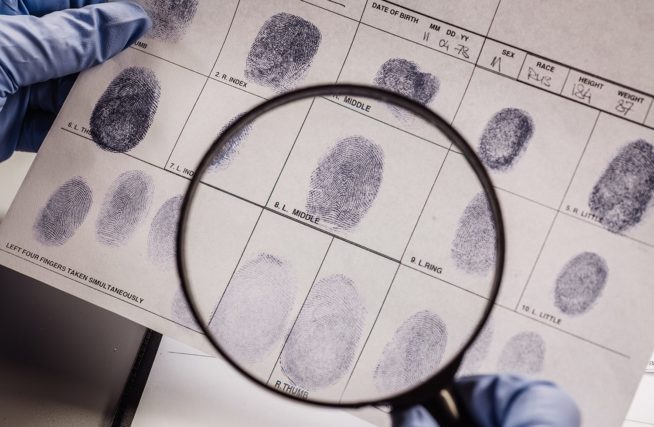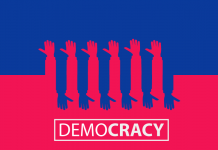This article is written by Oishiki Bansal, a student of Symbiosis Law School, Noida. This article gives insights into criminology and criminal psychology, the two different branches of criminal law and tries to explain the scope of both the branches.
Table of Contents
Introduction
Crime can be defined as an act of divergence from the accepted societal norms, morals, and behavior that results in a harmful impact on the whole society. Different countries have their own criminal code which codifies these crimes and states ways to prevent further, the occurrence of such acts. The word ‘crime’ is derived from the Latin word “crimen” which means “ to charge”.
Criminology and criminal psychology are two fields of crimes that are often misunderstood and mixed with each other. The difference between both the branches of criminal law is explained below.
Criminology
Criminology is an interdisciplinary field of study of crimes and the social responses followed by these criminal acts. It is a study from a sociological viewpoint. Individuals who study criminology are called criminologists. Their work is to study why the crimes are committed, who commits the crime, the root cause of the criminal activity, the impact of the criminal activities in the society, and how crimes can be prevented.
What constitutes a crime according to criminologists
The debate as to what constitutes a crime and what comes under the purview of crime has always been considered by the criminologists. Crime, if put in the most basic sense, means any act which has legal consequences or is codified in any prevalent law as an act of violation by the state. However, according to criminologists, crime is any act that is recognized by society as opposed to historical, cultural, and social conditions. For example, the act of consuming cannabis in the US during the 1937s was a crime but later consumption of cannabis for medical and recreational purposes was legalized.
Subsequently, many criminologists view the legal definition of crime as either too narrow or too broad as it excludes many harmful acts that could have a huge impact on the society and includes other harmful activities that could have little or no impact on the society. Therefore many criminologists have argued that the scope of crime should not be limited as to what is prescribed by the law but it should be understood from the perspective of social and non-legal disapproval and sanctions.
Theories of criminology
Classical theory
In the 18th century when the society was moving from a system of feudalism to a system where all the citizens were considered equal and were not divided based on class, the classical theorists of criminology were of the view that crimes are a result of an irrational decision or an individual’s choice. The states were empowered to develop codified laws for crime and ensure that all the citizens are treated equally. Any commission of a crime by an individual was considered a violation of the social contract. The social contract is an agreement between the citizens and the state, whereby the state promises to protect the citizens in return for citizens giving up their rights. Cesare Beccaria, an Italian philosopher, found that the impact of crime affected society as a whole, and therefore the state must take all the appropriate actions to establish law and order in the state.
Jeremy Bentham, one of the most prominent philosophers, argues that human behaviour is built on the principle of pleasure and pain, where the act of a human is categorized in such a way as to reduce pain and maximize pleasure. Therefore, the classical theories of criminology focused on punishments that acted as a medium to prevent crime by increasing the pain but not in a vengeful manner. Hence the role of the state was not only limited to deciding what is included in crime but also to deciding an appropriate punishment that would prevent the wrongdoer as well as other citizens from committing other crimes.
Positivist theory
As the theory of positivism began to take form and more scientific ways were developed to overcome the societal problems, two areas of criminology interested the positivist. Firstly, the Idea as to what contributed to an individual in becoming an offender. Secondly, getting deviated from the general societal norms and the social contribution mechanism in the society whose operation no longer ensured that the “system was working as a whole”.
The positivists focused on the wrongdoer and the individual and societal characteristics that influenced an individual to commit the offence as compared to classical theorists focused on law and the nature of the offence.
Strain theory
Strain theory was the first theory to argue that crime was a social phenomenon and a function of social processes and structures. Strain theorists believed that crime represents a violation of societal norms, values, morals, and behaviour that are agreed upon by the society as compared to the positive theorists who believed that crimes are a result of individual deficiency. The strain theorists pointed out that individuals commit crime as an alternative to meet their needs when the citizens do not have equal access to the resources of the state. According to these theorists, crime is best addressed when individual rehabilitation is combined with institutional reforms to increase access to the social programs available. They also advise on removing the causes of strain by providing access to social programs to the individuals who are prone to the maximum risk. They believe that by removing the causes of strain, the state can prevent individuals from committing crimes.
Critical theory
Critical theory of criminology is concerned with how the structure of power works within society and how these powers are placed in the hands of certain privileged citizens of the state resulting in marginalized communities committing a crime. Critical theorists are divided into two orientations, namely the structuralist and the post-modernists.
Structuralist
The structuralist focuses on how power is incorporated in society such as the criminal justice system. They believe that the marginalization of certain communities in society is the main cause of why crimes are committed. The structuralist critical thinkers focus on empowering the marginalized section and distributing resources equally to all the sections of society.
Postmodernist
Postmodernists investigate how “knowledge creation impacts human experience while simultaneously inculcating conflict over meaning”. Their approach identifies major beliefs, reasons, and causes that result in individuals committing crimes. The postmodernist’s focus is on building a society that includes every community of the society and decentralizes the power from the dominant sections to the marginalized section.
Both the structuralist and postmodernist, however, have an interest in disclosing the power that leads to the differences in the relationship of various communities in the society.
Criminology evolutionary models
The study of criminology focuses on the problems and reality of crimes in society. It is not just the study of crime as a static reality but rather a very evolutionary process. It reveals concerns about the welfare of society. The evolutionary process of criminology conceptualizes crime and law as a part of society and reflects human morals. The two model theory for the evolution of criminology is-
Life history model
The life history model is based on the observation that the individual’s growth and development in different areas of maintenance and reproduction is marked by the trade-offs they make. Thus the investment in some areas can supersede the investment in other areas especially when resources are scarce. Contingent strategies are inculcated by the environment in the individuals which leads to the different levels of investment in different areas. These strategies of investment are called life-history strategies. Individual life-history strategies are the trade-offs that an individual makes. For example, examining the current situation instead of future reproduction, choosing quality over the quantity of offspring, and inclining towards parenting compared to the mating effort. Individual life history presents the capital an individual has invested for his/ her survival and reproduction. Life history theory proposes that individual genetics are fashioned to respond to the environment‘s salient and recurring stimuli and cues. The flexibility in designing genetics allows an individual to endure various environmental stimuli and continue the reproduction process by finding multiple ways.
The life-history theory in criminology conceptualizes engaging in anti-social and criminal conduct as an individual strategy that invests in the current reproduction and not the future, the quantity of offspring over the quality, and in the mating process over the parenting process. The life-history strategies are divided into two categories – faster and slower. The faster life-history strategies are those strategies that involve more crime risk estimation and slower life-history strategies are those strategies that involve less crime risk estimation. The environment is the most important factor in this theory. Environmental stimuli that signal unpredictability, harshness, and survival risks mostly lead to crime-risk life-history strategies. Hence, these types of environments are important for criminologists to study. This model of evolution is related to the strain theory of criminology. They provide a framework that helps in understanding the variables such as economic status, age, sex, etc. that could lead to crime.
Evolutionary Neuroandrogenic theory
The evolutionary neuroandrogenic theory focuses on and explains why men are more prone to criminal activities. The word “neuroandrogenic” refers to the androgen hormones that are a specific type of hormones found in men to explain why men tend to exhibit characteristics that make their behaviour criminal in nature. This theory focuses on the question of ‘how’ and ‘why’. ‘How’ deals with the relation of the proximate mechanism to how the criminal functions and why the proximate mechanism and criminals are correlated. The ‘why’ part examines the evolutionary process whereas the how part examines the neuroandrogenic process.
The evolutionary neuroandrogenic theory uses the concept of competitive actions that leads to victimization and can risk the chance of one individual using the same action on another. Competitive actions that do not involve victims such as competitive sports or games are not considered criminal in nature. There is no surprise in the fact that the competitive actions that lead to victims have consequences for the success of survival and reproductive process for both the victim and the perpetrator.
Thus, the evolutionary neuroandrogenic theory helps us in understanding why patterns of crime exist more in men as compared to women. How the characteristics of criminal behaviour get formed in the genetics of some individuals. It explains why criminal behaviour is common among boys during puberty as compared to girls. With a surge in the production of androgen hormones in men, it tries to explain why men are more prone to hormone-stimulated criminal behaviour. The proponents of this theory believe that due to the selection pressure of resource provisioning skills required in the past to ensure the survival and success of the reproduction process has led men more vulnerable to the hormone-stimulated criminal behaviour
Criminal psychology
What is a criminal psychology
Criminal psychology also known as forensic psychology, focuses on studying the mind patterns of a criminal and his/her behaviour. A criminal psychologist is interested in the question of what may have led an individual to commit a crime rather than the question of why. It deals with the thoughts, behaviour, feeling, emotions of an individual to study the criminal circumstance that led him/her to commit a crime. By studying the mind pattern of a criminal the criminal psychologists can identify the criminal’s chance of committing a crime again and again.
Role of criminal psychologists
A criminal psychologist’s role is to aid in criminal investigation by helping law authorities in solving crimes and analyzing the behavioural patterns of the suspects. They play an important role in the investigation of criminal profiling, also known as offender profiling. The investigation of criminal profiling deals with individuals who commit crimes at hand. This type of investigation helps in identifying serial cases of criminal activities as the details of multiple cases are compared in this investigation. This investigation aims to categorize the suspect’s behavioural tendencies, demographics, and geographical variables. It forms a framework of the suspect’s life and his/her psychological state of mind.
Investigation challenges in criminal psychology
The challenges that are faced by the criminal psychologists while interrogating a suspect is that sometimes the suspect tries to be hostile, distrustful, and uncooperative to save themselves from the criminal charges. The suspects become deceitful, cunning, and try to save themselves from the situation. Sometimes the biases of the psychologists also affect the interrogation process. The most common approaches adopted by the suspects to deceive the criminal psychologist –
The logical and realistic approach
This approach is based on relating the events or scenarios that happened by the suspects to persuade the psychologist of their inability to commit the crime. The suspects also resist answering the questions of the interviewer which makes the process long and tiresome. Suspects by using this approach become very uncooperative and the process of obtaining truth becomes challenging.
A passive and helpless approach
In this approach, the suspect sticks to one version of the story and tries to refute all the questions asked by the interviewer. This is done to avoid confrontation with criminal psychologists during the whole interview to reduce stress. However, it increases the susceptibility of the suspect.
Techniques of investigation in criminal psychology
The reverse order
In this technique, the interrogator asks the suspect to explain the whole situation from the start or uses different situations as the beginning for the suspect to explain the whole situation. The suspect can be asked to retell the situation from the end and work anticlockwise to the start. For example, the suspect can be asked from where or at what time he/ she was arrested.
Change of perspective
This technique is used on the witnesses to crimes. Witnesses are asked as to what they saw from the perspective of different people, like some standbys, the victim itself, or any other individuals relevant to the situation. This technique is used to induce a witness to recall situations from different perspectives to find clues that could help in investigation purposes. The correctness and weight of evidence play an important role in this type of interrogation as it determines the extent of truth stated by the witness. This technique is generally well accepted in the case of children being eyewitnesses to a crime.
Detecting lies and deceitfulness
The verbal and nonverbal cues of the suspects can tell a lot about the deceitfulness of the statements that the suspect is stating. For example, a suspect that feels guilty while stating a false statement would not maintain eye contact and hesitate while speaking whereas, a suspect who is comfortable while speaking a false statement will look confident and the statement would be concise, logical, and believable. Most criminal psychologists believe that it is difficult to continue a lie as most of the suspects get caught up due to a lot of arrangements while others get stuck in making stories. A criminal psychologist can detect whether the suspect is stating the truth or not using the following pointers –
- Interviewer having a well-prepared response
- Being extraordinarily real by stating the situation
- Prevent himself/herself from giving information or narrating the situation.
- Easily recalling past events stating that he/she has a good memory.
- Being confident, bold, or unemotional instead of being afraid or guilty.
Cognitive interviews
These interviews try to solve the problem of weak memory problems, by ascertaining the reliability of eye-witnesses statements. Three reliable techniques used in cognitive interviews are –
Social dynamics
The element of comfortability in the groups defines how the information will be passed from one member to the other. To make the witness, suspect or victim feel comfortable, the following techniques should be used by the criminal psychologist –
Develop good standing
- Allow a witness to actively participate in the interrogation process.
- The psychologists should not dominate the interrogation process and encourage the interviewee to participate actively by following the stated techniques –
- Asking them to feel free in the interrogation process
- By requesting an open-ended interview
- By not interrupting the interviewee during the narration of the situation
Memory and cognition
A criminal psychologist is advised to involve cognitive tasks while asking questions from a suspect witness or a victim. These questions should involve a restatement of a contextual situation in which the Interviewee is asked to recall certain specific parts of the situation such as the appearance of the suspect, the environment of the place where the crime took place, etc. These questions should be frequently asked to verify that the interviewee is stating the truth. Many psychologists believe that if the interviewee is lying about certain things he/she would be incoherent or imprecise while narrating the situation.
Communication
Communication is key to resolving any kind of problem therefore communication between an interviewer and the interviewee should be appropriate and non-biased. Inadequate communication can result in a witness or victim not stating an essential fact or the suspect not disclosing a crucial element. The interviewee should be allowed to narrate the whole scenario or situation without any interruption. This technique is based on the contextual connectivity which is built when an interviewee narrates the situation. It is also used to infer relatedness or connectivity between the suspect’s statement, witness’s statement, and victim’s statement. This technique helps to ensure that the testimony given under the interrogation is reliable and is not staged by any of the interviewees.
Assessment of statements validity
This technique can be used to assess the validity of the testimonies given by the victims in the case of sexual assault kidnapping Child labour etc. It comprises three types of techniques-
Statements are taken in the form of interview
In this technique, the questions are asked from the witness in a structured or unstructured way that is related to the situation in a manner to ascertain the truth. The interviewer asks lead questions that are salient to the investigation and reads non-verbal and verbal cues to ascertain the reliability of the testimony.
Criteria-based content analysis
In this technique, the content of statements made by the witness or suspect is evaluated by the clinical forensic experts. The content from the statements is structured on the features of the statements made by the suspect or witness using the precise content of the testimonies given. Some examples can be a description of the appearance of the suspect, description of the standbys of the crime, objects used, etc.
The use of the content checklist
In this technique, a checklist is prepared of content that is inferred from the criteria-based content analysis. The checklist prepared is tested through a systematic process by formulating questions based on the resulting content and interviewing the interviewee again.
Offender profiling
As discussed above, in this technique the accused profiles are segmented based on certain criteria or characteristics. Two approaches to offender profiling are –
Inductive method
This technique of offender profiling relies on the criminal psychologist’s competency, knowledge, and skills. This technique is often referred to as being clinical in nature as it is logically used to persuade the interviewee to spill the truth.
Deductive method
This type of technique is often referred to as being statistical in nature. The deductive method relies only on the forensic evidence and facts, the evidence obtained from crime scenes, and empirical data such as fingerprints, video recordings related to the offence.
Some of how offender profiles are segmented using both the approaches are –
- Profiling based on historical figures and political data
- Profiling based on criminals and the crime scenes.
- Profiling based on common features of the criminals – some of the features can be:
- Psychopathic behaviour
- Impulsive low attention hyperactive behaviour
- Family history of criminal behaviour
- Financial instability
- Lack of parenting
Psychological criminal investigation intervention techniques
Criminal psychologists are often involved in the study of assessment, management, research, and prevention of crime. Therefore, implementing methods to modify the behaviour can result in the prevention of crime and intervene in the study of criminologists, social workers, etc. The techniques to control and manage criminal behaviour using criminal psychology are –
Aggression replacement training
This technique was developed in the United States. It is used to correct the behaviour of violent criminals. This technique contains three components –
Techniques of skill streaming
This technique includes training the accused in replacing aggressive behaviour and antisocial skills.
Training techniques for anger management
This technique identifies the criminal’s triggers that lead to anger issues. After identifying the triggers the anger management training is executed including the following –
- Improving the knowledge about the trigger using emotional factors.
- Teaching skills and strategies to cope
- Giving exposure by training skills
- Self-instruction training
- Social – solving problem
Training techniques for moral reasoning
This type of training aims at improving moral skills and reasoning skills. The objective of this training is to enhance the offender’s understanding of the effect of their behaviour on society as a whole and individuals.
Group therapy
This technique includes making a group of criminals that have a similar criminal history and discussing with each other ways to solve their problems. These groups also include rehabilitated criminals as models who encourage others during these group activities.
Token economy
This technique uses the age-old method of rewarding the desired behaviours and punishing the undesired behaviours.
Cognitive therapy
This technique is used when the wrongdoer has false beliefs about a situation or behaviour. The method of cognitive restructuring is used to rectify false beliefs. This technique is used mostly when the wrongdoers believe that doing acts that divert from socially accepted norms will give them fame and recognition. These beliefs need to be restructured and this is done using cognitive methods.
Criminal psychology and its relevance in social work
Social work is dependent on studying the psychological aspects of a human. Psychological factors are needed to understand issues like parenting styles, traumatic experiences that an individual has gone through, and suicidal tendencies that lead to criminal behaviour in the individuals. Criminal psychology helps social workers to understand and train on issues that govern psychological criminal behaviour. Criminal psychology helps the social worker to detect and be able to manage formation, biases of attribution, past impressions, prejudice, etc.
Conclusion
Criminology and criminal psychology are different branches of study under the law of crime. They are often confused together, however, both have a huge variation. Criminology is the study of crime and its impact and criminal psychology is the study of the human psyche which influences humans to commit crimes.
References
- https://work.chron.com/criminal-psychologist-vs-criminologist-16037.htmlhttps://elawtalk.com/all-about-criminology/
- https://www.researchgate.net/publication/303994858_Forensic_Psychology_in_India_published_in_International_Research_Journal_on_Police_Science_Volume_1_Issue_I_July_2015
- https://www.researchgate.net/publication/337149695_Forensic_Psychology
- https://www.researchgate.net/publication/333968403_Criminology
- https://www.researchgate.net/publication/335526784_Chapter_Twenty-three_FORENSIC_PSYCHOLOGY_THEORY_AND_APPLICATION
Students of Lawsikho courses regularly produce writing assignments and work on practical exercises as a part of their coursework and develop themselves in real-life practical skills.
LawSikho has created a telegram group for exchanging legal knowledge, referrals, and various opportunities. You can click on this link and join:
https://t.me/joinchat/J_0YrBa4IBSHdpuTfQO_sA
Follow us on Instagram and subscribe to our YouTube channel for more amazing legal content.
 Serato DJ Crack 2025Serato DJ PRO Crack
Serato DJ Crack 2025Serato DJ PRO Crack











 Allow notifications
Allow notifications



